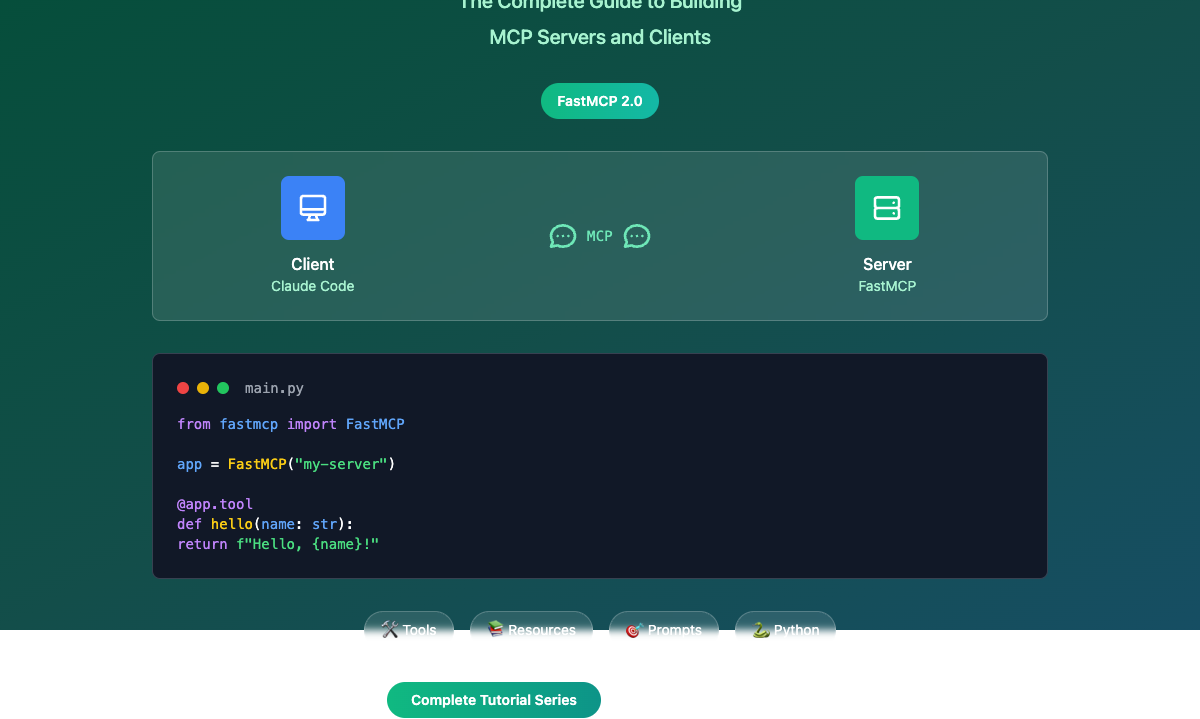Introduction to FastMCP and Model Context Protocol
Introduction to FastMCP and Model Context Protocol
What is the Model Context Protocol (MCP)?
The Model Context Protocol (MCP) is a revolutionary standardized way to provide context and tools to Large Language Models (LLMs). Often described as "the USB-C port for AI," MCP provides a uniform interface for connecting LLMs to external resources and functionality.
Think of MCP as a specialized API designed specifically for LLM interactions. MCP servers can:
- Expose data through Resources (similar to GET endpoints for loading information)
- Provide functionality through Tools (similar to POST endpoints for executing actions)
- Define interaction patterns through Prompts (reusable templates for LLM conversations)
- Manage connections securely and efficiently
Why FastMCP?
Building MCP servers from scratch involves significant boilerplate code - server setup, protocol handlers, content type management, and error handling. FastMCP eliminates this complexity by providing a high-level, Pythonic interface that lets you focus on building great functionality.
FastMCP 2.0 is the actively maintained version that goes far beyond basic protocol implementation. It offers:
🚀 Fast Development: High-level interface means less code and faster development
🍀 Simple API: Build MCP servers with minimal boilerplate
🐍 Pythonic Design: Feels natural to Python developers
🔍 Complete Platform: Comprehensive toolkit from development to production
FastMCP Features
Core Capabilities
- Easy Server Creation: Create MCP servers with just a few lines of code
- Decorator-Based Design: Simple decorators to convert functions into MCP tools
- Multiple Transport Support: STDIO, HTTP, and SSE transports
- Type Safety: Automatic schema generation from Python type hints
- Async Support: Full support for both sync and async functions
Advanced Features
- Server Composition: Mount multiple servers together
- Proxy Servers: Create intermediary servers for existing MCP services
- Authentication: Built-in security for production deployments
- OpenAPI Integration: Generate servers from existing REST APIs
- Client Libraries: Comprehensive client support for testing and integration
A Simple Example
Let's see how easy it is to create a basic MCP server with FastMCP:
from fastmcp import FastMCP
# Create a server instance
mcp = FastMCP("Demo Server 🚀")
@mcp.tool
def add_numbers(a: int, b: int) -> int:
"""Add two numbers together."""
return a + b
@mcp.tool
def greet_user(name: str) -> str:
"""Greet a user by name."""
return f"Hello, {name}! Welcome to FastMCP!"
if __name__ == "__main__":
mcp.run()
That's it! This creates a fully functional MCP server with two tools that can be called by any MCP client.
Next Steps
In the following sections, we'll dive deeper into: - Setting up your FastMCP development environment - Creating sophisticated tools and resources - Building production-ready servers - Integrating with Claude Code and other MCP clients - Advanced patterns and best practices
FastMCP makes the powerful Model Context Protocol accessible to Python developers, enabling you to build sophisticated AI-powered applications with minimal effort.
